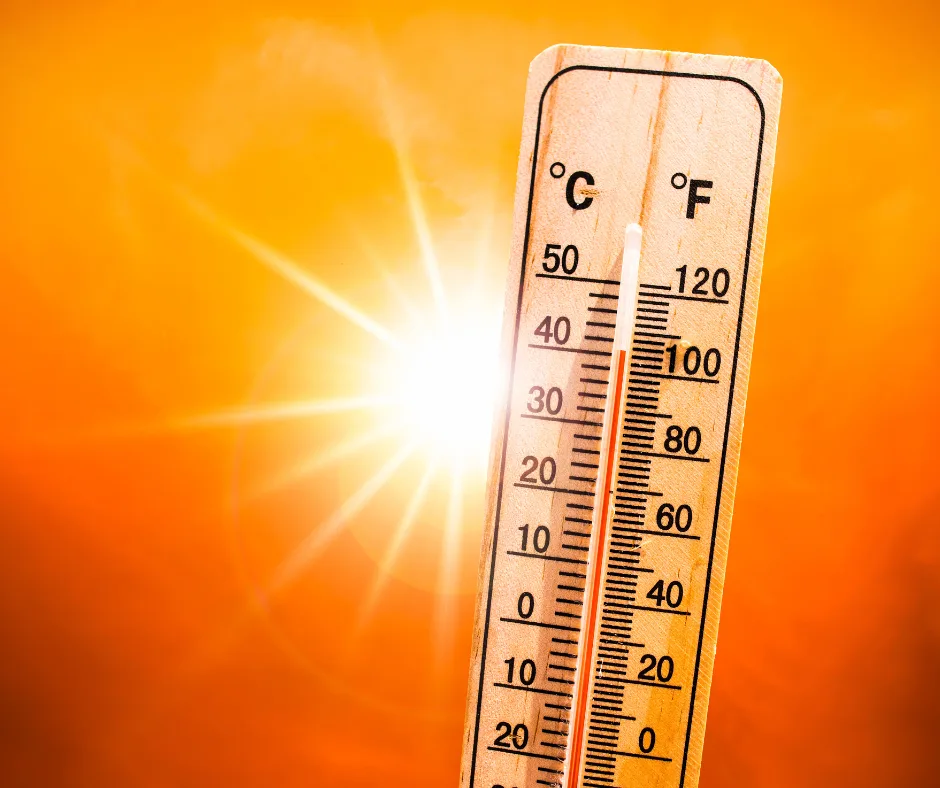When is it too hot?

Temperature is measured with a thermometer, right?
So, if I want to know whether it’s too hot for my employees to work and whether I need to take measures, I just look at the thermometer… right?
If only it were that simple.
In hot weather, much more is involved than just the temperature on a standard thermometer. Whether it is really too hot to work safely depends on a whole range of factors that together determine how much strain the heat places on the body. And that’s exactly where WBGT comes into play.
Table of contents
What is WBGT?
The Wet Bulb Globe Temperature (WBGT) is an internationally used measure of heat stress on the body. The WBGT value helps determine whether working conditions are still safe at high temperatures, especially during physical labor.
A WBGT meter does not just measure temperature; it also considers multiple influences:
- Air temperature
- Humidity
- Solar radiation or hot surfaces
- Airflow
In short: a WBGT meter measures how strongly heat actually affects the body, and thus how high the risk is of exhaustion, heatstroke, or other health problems.
What does the law say?
Belgian legislation requires employers to take this into account. The Codex on Well-being at Work (Book V, Title 1, Chapter I, Art. V.1-1 §1) clearly states that a risk analysis of thermal environmental factors must be carried out. This includes, among others:
- Air temperature (°C)
- Relative humidity (%)
- Airflow speed (m/s)
- Solar/thermal radiation
- Physical workload (expressed in watts)
- Work methods and equipment used
- Work clothing and PPE
- The combination of all these factors
Based on this risk analysis, appropriate preventive measures must be taken.
But what if you don’t have a WBGT meter?
Let’s go through them.
Buy your own WBGT meter
This is the most straightforward solution. WBGT meters are already available from around €250. With one, you can take measurements whenever you want. You don’t have to wait for external services, and you immediately have insight into the actual heat stress.
Advantages:
- Full control in your own hands
- Frequent measurements without appointments or waiting times
- Increased internal knowledge of heat risks
For many companies, this is a small investment with a big impact on safety.
Involve your ESPPW
Don’t have your own meter, or unsure how to interpret the data? You can call on your External Service for Prevention and Protection at Work (ESPPW). Many of these services have measuring equipment and can help you assess the risks.
Advantages:
- Measurements carried out by experts
- Reliable, professionally substantiated results
- Often includes tailored advice
This approach is particularly useful in complex work environments or when employers want extra certainty.
Calculate yourself using weather data
As a third option, you can try calculating the WBGT value yourself using online tools and local weather data (such as temperature and humidity). For simple situations, this is a handy intermediate solution — for example, to quickly make a first assessment.
Advantages:
- Quick and free of charge
- Useful when preparing work schedules
But be careful: this method does not take factors like radiation, wind, or clothing into account. Results are therefore only a rough estimate, and in case of doubt it’s safer to measure or consult a specialist.
The right choice?
That depends on your workplace.
At Prevom, we know that no two workplaces are alike. Your team may be working under a steel structure in full sun. Or in a production hall where machines also emit heat. Whatever your situation, there is always a way to make the right decision.
Whether you measure yourself, outsource measurements, or calculate: make sure you know what you’re doing when temperatures rise. Because in the heat, every degree counts — for the safety, health, and productivity of your employees.
Need help making the right choice?
At Prevom, we are ready to help — with advice, practical tools, and tailored guidance.
Sources:
- Hoe meet u de temperatuur?, Fod WASO
- Hoge temperaturen op het werk, Fod WASO, 09 juni 2023
- Thermische omgevingsfactoren, Fod WASO
- Werken in de warmte, IDEWE, Ilse Moerland
- Disciplineverantwoordelijke Arbeidsgeneeskunde, 4 juni 2025
- Handige Apps voor het werken in de hitte of echt warme weersomstandigheden, werkveilig, 20 June 2023
Looking for clarity?
Prevom has the expertise you are looking for.
We will be happy to inform you about the possibilities!